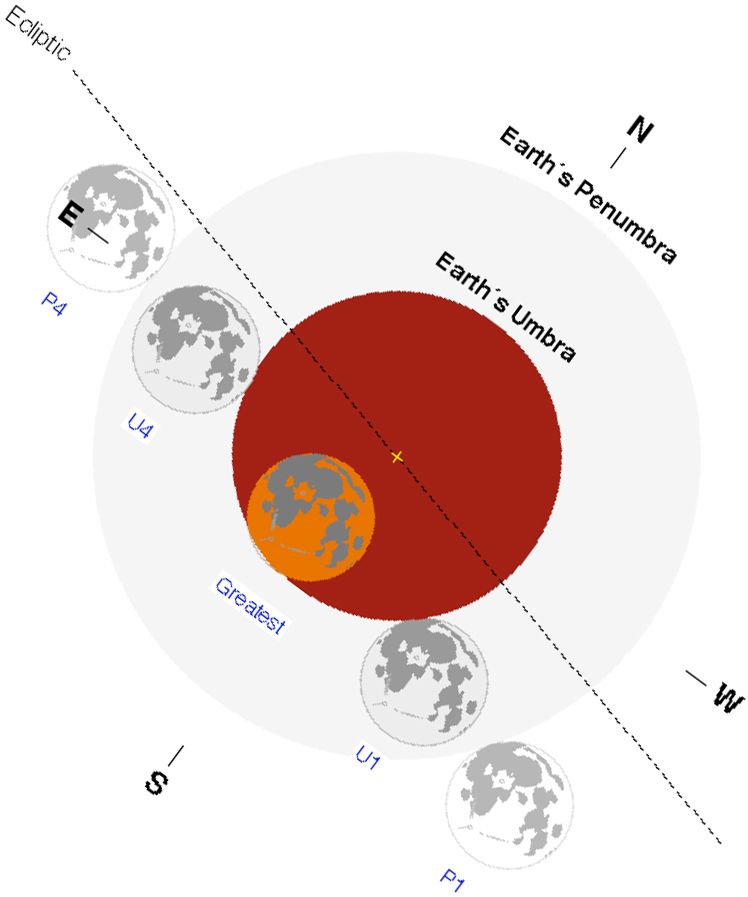
The Near-Total Lunar Eclipse of Thursday, November 18th – Friday, November 19th, 2021
An exceptionally deep partial eclipse, with just a sliver of the moon not in Earth's umbral shadow at greatest eclipse. The moon will be above the horizon throughout the eclipse in Idaho.

Adapted from a diagram by NASA. Note that, although the moon's orbital motion will cause it to move to the upper left (east) relative to Earth's shadow, it (and the shadow) will be moving westward due to Earth's rotation. Thus, for observers in Idaho, the moon will be moving lower in the sky relative to the local horizon for most of the eclipse (from 12:22 AM onward).
Eclipse timeline (all times listed are in Mountain Standard Time, GMT-7 hrs.):
- 11:02 PM — First penumbral contact (P1). The left edge of the moon begins to enter Earth's penumbral (partial) shadow. The subtle decrease in illumination of the moon will not be noticeable to the eye at this stage.
- 11:45 PM — Centennial Observatory opens for public telescope viewing, weather permitting. Please dress warmly! By this time, the upper left edge of the moon will appear subtly darkened.
- 12:18 AM — First umbral contact (U1). The moon begins to enter Earth' umbral (full) shadow. A small, dark "bite" begins to grow ever larger from the moon's upper left edge.
- 2:03 AM — Greatest eclipse. The moon reaches its maximum excursion into the umbral shadow, with just a tiny, bright sliver peeking out from the lower left edge. The rest of the moon will appear dark, possibly with a subtle reddish-orange tint. From this point on, the bright sliver will grow until the end of the umbral phase.
- 3:47 AM — Last umbral contact (U4). The moon, now only in the penumbral shadow, will appear subtly darker on its lower right edge. This darkening will slowly diminish until the end of the eclipse.
- 4:15 AM — Observatory closes. By this point, any shading on the moon will appear extremely subtle at best.
- 5:04 AM — Last penumbral contact (P4). Upon exit from the penumbra, the moon will appear completely normal to the unaided eye.